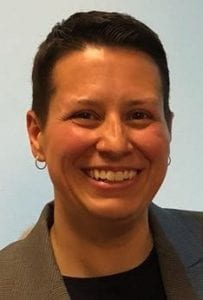
Marc Cohen
Medicaid helps millions of older adults access care and support they need but cannot afford in life. What happens after those people die is the subject of a long-running debate that has taken a new turn.
States are required by federal law to try to recover some of the money spent on long-term services and supports (LTSS) from the estates of beneficiaries, a practice that has been in place since 1993. States reported collecting about $733 million from those efforts in 2019. A portion of the recoveries is returned to the federal government, which funds Medicaid along with the states.
But a non-partisan national advisory organization, the Medicaid and CHIP Payment and Access Commission (MACPAC), recently recommended to Congress that it change current law to make recovery efforts by states optional rather than mandatory.
One factor in the decision: An analysis by the LeadingAge LTSS Center @UMass Boston of economic data on 578 Medicaid recipients age 65 or older who had died since 2012. The study demonstrated in detail just how little the vast majority of those estates have to give back and why in many cases recovery may not be worth the effort.
“This is exactly the kind of research and analysis the LTSS Center aims to do, producing data-driven evidence that can help shape policies and laws affecting older adults and their families,” says Marc Cohen, center co-director. “While our goal was not to recommend a specific policy change, the data we produced informed the debate and led to change.”
Estate recovery has long been supported by some as a way to replenish Medicaid funds and a program integrity tool to ensure that people who have resources that could be used to pay for LTSS actually do so, even after death.
But critics argue that people with sizable wealth are often able to legally shield assets from Medicaid estate recovery. As a result, they say, the burden of estate recovery falls primary to those of modest means and may disproportionately affect people of color given disparities in household wealth.
In its recommendation, the commission agreed that current mandatory recovery efforts place an unfair burden on beneficiaries of limited means, whose heirs would “likely receive substantial protection from poverty or housing insecurity if they were able to retain an estate of even modest size.”
Most people who receive Medicaid benefits have few assets and limited income as a condition of their eligibility for the program. Generally, beneficiaries can’t earn more than the federal poverty level ($12,880 for an individual in 2021). Assets are typically limited to $2,000 for individuals, a bit more for many married couples. But several resources do not count in that calculation, including a primary residence, personal effects and one automobile.
MACPAC engaged the LTSS Center to examine the circumstances of Medicaid beneficiaries who had died in recent years in order to assess the potential value of their estates. The center did that by looking at data from Medicaid beneficiaries who participated in the Health and Retirement Study (HRS) and had died during the 2012, 2014, or 2016 survey periods.

Jane Tavares
The analysis by Cohen and LTSS Center research fellow Jane Tavares showed that most of those beneficiaries had few, if any, assets when they died. Ranked by median household total wealth, the bottom 25 percent had a negative asset total and the next quartile of the group had less than $10. The third quartile had median assets of $12,500 and the top 25 percent owned assets worth $112,258. All of the median wealth totals also took into account estate debts.
“The assets of most value to Medicaid recovery efforts by states are homes owned by beneficiary estates,” Tavares says, also nothing that “only one in three of those beneficiaries owned their own homes and the average equity in the properties was $85,368.”
In fact, slightly less than a third of deceased Medicaid beneficiaries who owned homes had equity in that real estate worth more than $100,000. That means only about one in 10 of all the beneficiaries in the LTSS Center analysis had a meaningful level of home-related assets for states to target in recovery efforts.
MACPAC voted in favor of three recommendations based on the LTSS Center analysis, a review of data on actual Medicaid recoveries, and interviews with stakeholders.
In addition to the recommendation for an optional Medicaid estate recovery standard, the commission voted to support an amendment to federal law that would allow states providing LTSS under managed care arrangements to pursue recovery when the cost of services used by a beneficiary was less than the capitation payment made to a managed care plan.
The commission also recommended that the U.S. Secretary of Health and Human Services set minimum standards for hardship waivers under the Medicaid estate recovery program. It said states should not be allowed to pursue assets that are the sole income-producing resource of survivors, homes of modest value, or any estate valued below a certain threshold.
Disclaimer: The research underlying the LTSS Center analysis was completed with support from the Medicaid and CHIP Payment and Access Commission (MACPAC). The findings, statements, and views expressed here are those of the authors and do not necessarily represent those of MACPAC.

Leave a Reply